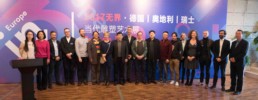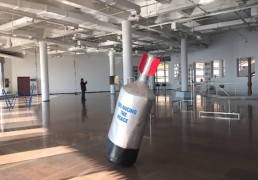René Zeh (b. 1973)
Born in Kempten, Germany
Based in Dusseldorf, Germany
It seems as if there has been superimposed onto the real world a second one, edited by Photoshop into a better, more beautiful world which insists that the real one is only a provisional version of itself that must still undergo a process of aestheticization.
It would accordingly be too simple to reproach the strategies of contemporary commercial pictorial production for propagating illusory worlds of desire. The fact is that they no longer develop fictitious dream scenarios but, for a long time now, have been issuing authoritative stage directions as to how we should imagine the world, even how we should fashion it.
At the beginning of most designs―for furniture, houses, photo series in newspapers, fashion collections, etc.―, there is a moodboard, a collage of diverse pictures, textures, and material samples which convey an emotional atmosphere with regard to how the developing product could look, into what surroundings it fits, how it ideally feels. Before the actual product appears, there exists the ambience into within which it is supposed to find a place. From the standpoint of designers, the world fans out into various ambiences―lifestyle-worlds, scent-worlds, color-worlds which function like sophisticated building-block systems and provide the appropriate surroundings for each and every situation in life.
The fact that, in earlier times, this mapping out of lifestyle-worlds sometimes clearly included an idealistic component in which the idea of design in the widest sense was also accompanied by the concept of an improvement in the social aspects of life calls to mind contemporary art when it interprets and integrates into its own works the formal vocabulary of modernism. Behind this nostalgic longing for modernism, there probably lies a yearning, less for the past itself, than for the fantasies and utopias which were still possible in the era of grand narratives. Or else the wish to recover the potential of social design through aesthetic innovation, without having to give up pleasure in a modernist design which, in the meantime, has rigidified into pure form.
René Zeh, however, pursues another path for exploring the influence exercised by modernism (admittedly a somewhat imprecise term) upon our world so fascinated by surfaces and an aesthetic of materials. Clippings from glossy magazines and styled series of photographs play an important role, one which has quite positive connotations. In contrast to other artistic investigations of the machinery of the imagination and the concomitant chain of utilization, his oeuvre brings to the fore an element which frames these high-gloss worlds on the one hand, but on the other hand strangely disrupts them. His works’ resemblance to unfinished, home-made models and their use of standardized building materials without a perfect finish imbue them once again with that aesthetic which characterized design work before the computer program laid claim, by means of its virtual worlds, to jurisdiction over design in general. Thus there arises something which could perhaps be described as negative or at least skeptical moodboards―design collages for a present that, in the course of its global commercial entanglements, has simply lost all capacity for achieving the potential of radically divergent thought which, however, still exists as a ruin. And so the ideas of the avant-garde, international design, and haute couture are taken into Zeh’s oeuvre but are covered over by a slightly trashy aesthetic of utilization. Yet it is not simply a matter of a critical investigation or a fundamental calling into question. Instead what is created is a montage which allows contradictions to come to light without naming them explicitly. This is just as when there is an encounter between two systems which are not entirely incompatible but tend to be susceptible to disturbances.
The Vitruvian primitive hut exercises an influence on many of René Zeh’s sculptures which are reminiscent of architectural designs, just as does the idea of the Case Study Houses espoused by the architectural elite of American postwar modernism. In their emphatically simple shapes, their raw materials, and their repudiation of perfect facades, these sculptures and installations seem like a distorted echo of the utopia, now a monumental wasteland, of model real estate which originally had a social purpose but ultimately succumbed to being merely a luxury environment.
Another recurrent motif is the display case made of standardized building materials and presenting the collaged combination of pages from newspapers and fashion magazines, illustrations of the artist’s own works, and reworked newspaper clippings, or a filmic succession of invitations to art exhibitions. These presentation surfaces as well explore moods and condense motifs without making reference to concrete situations. They acquire a design potential but format it in a fresh manner. They are references to areas in which ideas take on form and make their appearance in public. In their accumulation of what is always the same, however, they are suffused with a slight doubt as to where this is all actually supposed to lead.
Vanessa Joan Müller, Kunsthalle Wien, 2013


